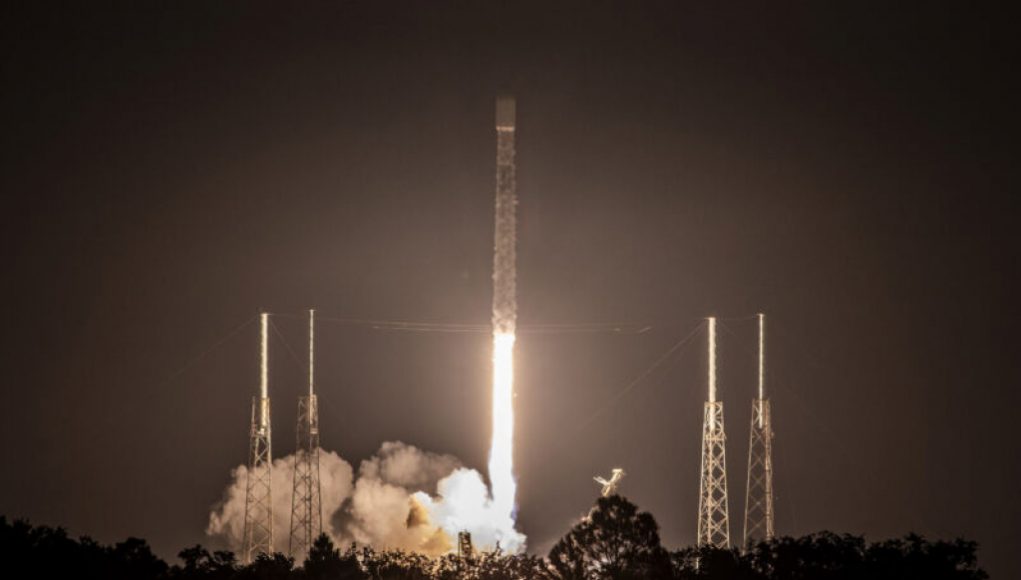Get ready to be amazed because SpaceX is on a roll! It feels like they’re launching rockets almost every day, and guess what? They’re also breaking records left and right. Whether it’s the number of launches, turnaround time, or reusing Falcon 9 boosters, SpaceX is pushing the boundaries.
This Labor Day weekend, SpaceX shattered another record by successfully launching a Falcon 9 rocket from NASA’s Kennedy Space Center in Florida. This marked their 62nd launch of the year using either the Falcon 9 or Falcon Heavy rocket. If we count the test flight of the Starship mega-rocket in April, it becomes their impressive 63rd launch.
But that’s not all. Over the past 12 months, SpaceX has completed a staggering 83 Falcon 9 or Falcon Heavy missions. And according to Elon Musk, the founder and CEO of SpaceX, this launch cadence is only going to increase in the coming months.
Musk recently shared on his social media platform, X, that he’s aiming for 10 Falcon flights in a month by the end of this year, and an incredible 12 per month next year. SpaceX has already achieved 10 Falcon launches within a 30-day period, so this ambitious goal might soon become the norm.
SpaceX isn’t just leading in the number of launches; they’re also dominating in terms of total payload mass launched into orbit this year. In the first half of 2023 alone, SpaceX delivered approximately 447 metric tons of cargo into orbit, accounting for about 80 percent of all material launched worldwide, as reported by the space analytics firm BryceTech.
Musk confidently stated that SpaceX plans to launch around 90 percent of the world’s total payload mass into orbit next year, based on their launch manifest for 2024.
Advertisement
Blink, and you’ll miss it
Did you know that nearly 60 percent of SpaceX’s missions this year have carried Starlink Internet satellites into orbit? Alongside these missions, SpaceX has also successfully launched three astronaut missions to the International Space Station and three Falcon Heavy rockets since the beginning of the year.
One of the key factors contributing to SpaceX’s increasing launch cadence is their remarkable reuse of first-stage boosters and payload fairings. In fact, in July, SpaceX extended the usable life of a Falcon 9 booster from 15 flights to an impressive 20 missions. However, this life extension will currently be limited to Starlink launches only.
But that’s not all. SpaceX’s launch teams are also working tirelessly to reduce turnaround times. At their most-used launch pad in Florida, the turnaround time between missions has been reduced to less than four days this year. This is crucial because their other launch facility in Florida is occupied with Falcon Heavy missions and astronaut launches, which naturally require more preparation time.
Meanwhile, on the West Coast in California, SpaceX’s launch pad has already hosted 18 Falcon 9 missions. However, the design of the strongback, the truss-like structure next to the rocket during the final countdown, makes the setup process longer compared to Florida. Unlike the strongbacks in Florida that swing away from the rocket at liftoff, the one in California remains exposed to the fiery exhaust, necessitating more refurbishment between launches. Nevertheless, SpaceX’s ground crew in California has managed to launch Falcon 9 missions as close as 10 days apart.
SpaceX has set a new annual launch record, having launched and landed a total of 32 missions so far in 2020.
This remarkable achievement surpasses the previous record set in 2018 of 21 missions. Not only is this a major feat for the aerospace company, it is a major milestone for space exploration as a whole.
The company’s founder and CEO Elon Musk said of the accomplishment, “It looks like we just set a record for the most orbital launches in one year for SpaceX,” via Twitter. “2018 No.1, 2020 No.2, and an outside chance at overtaking 2018 possibly on the last Falcon 9 flight this year.”
Indeed, the success of SpaceX has been well documented, as the company has demonstrated advanced rocket landing techniques, re-usable rocket technology, and key advancements in launch vehicle technology and reliability.
The success of SpaceX has enabled the U.S. to once again take the lead in aerospace exploration and technology, having been overshadowed by the Soviet Union in the Space Race of the Cold War era.
Throughout the achievements of SpaceX this year, the successful launches often concluded with successful landings on autonomous drone ships located in the Atlantic and Pacific oceans.
SpaceX has been highly successful in its efforts to tackle mass production of its Falcon 9 and Falcon Heavy rockets, along with its plans to transition to next-generation launch vehicles Starship and Super Heavy.
The company is continuing to develop spacecraft designed to send humans to the Moon and Mars, and truly allows space exploration to venture into its next era.




















